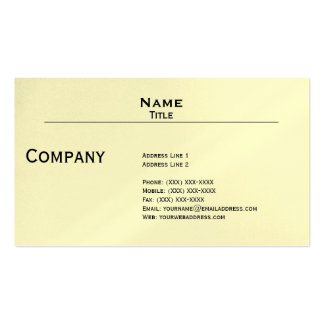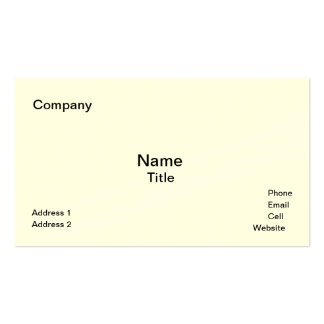But, don’t worry about how you deal with all that marketing clutter. Think about your prospects, customers, and clients. That’s a lot of ads, announcements, and commercials vying for their attention. And it can be pretty daunting to be just 1 in 5,000.
So, what’s your strategy for breaking through the chaos and actually getting noticed?
One of the first rules of marketing is that you can’t blend in with the crowd. Ever.
Think about it this way.
Jane moved to Dayton, Ohio about two years ago and she is long overdue for a dentist appointment.
One of the main reasons for Jane’s procrastination is that she is scared to death of going to the dentist. But, despite her fear, she heads over to Google and types in “Local Dentist.”
Over 7 million search results pop up and Jane is forced to start scrolling down the page. All the dentists look the same and Jane is overwhelmed by all the ordinary, unexceptional choices.
She doesn’t know where to start, so she clicks on the first three results: Dayton Dental Associates, James Johnson DDS, and CleanTeeth.com. Again, all three dentists simply blend together in Jane’s mind.
She’s almost ready to throw in the towel when she notices a local dentist office that specializes in treating anxious patients. This peaks Jane’s curiosity, so she heads over to their website where she discovers that this dentist guarantees gentle, non-invasive procedures even for the most panicky patients.
Jane books her appointment.
The bottom line is that you can’t be just another dentist.
You need to offer something different.
You need to be unique, exclusive, and one of a kind.
And there needs to be an obvious reason that your customers will pick you above all the others.
This is called your competitive advantage. And it’s one of those marketing terms that you simply can’t ignore.
Michael Porter, a professor at the Harvard Business School, wrote the definitive textbook about competitive advantage called (ironically enough) Competitive Advantage.
Porter defines competitive advantage as what distinguishes you from the competition in the minds of your customers.
Your competitive advantage gives you that cutting edge. It answers the question: “Why should a customer buy from me rather than my competition?”
Even though it can be a tough question to answer, it’s essential to the overall success of your small business. In fact, growing a sustainable business is often completely and wholly dependent upon a powerful competitive edge that builds a base of loyal customers and clients.
Here are 3 competitive advantages that small business owners can claim:
1. Focus
You have a focused advantage when you create a product around a small segment of your market whose needs aren’t being met by larger companies.The “big boys” create general products that appeal to the broadest range of their target market. Think Coca-Cola, Toyota, and McDonalds.
But, a small business is much more nimble and agile.
They can concentrate on smaller, underserved markets of their industry.
Example: The Potato Chip Industry is a packed market filled with intense competition.
The only conceivable way to break into this market is to discover what the big brands (i.e. Ruffles and Jays) can’t offer when it comes to potato chips.
This is exactly how Tyrrells Crisps became a huge success story. They discovered that there was a whole segment of potato chip lovers who wanted top-quality, hand-made chips.
So, Tyrrells introduced a small, hand-fried premium chip to the potato chip market. It was a huge hit with their audience. The only way that Tyrrells could succeed in this market was to find a big, gaping hole and fill it.
A focused advantage revolves around a product.
Therefore, if you sell food, clothing, art, crafts, etc. you can create a focused advantage over your competitors.
2. Differentiation
You have a differentiating advantage when your service is noticeably better than anyone else in your market.Generally, there are three main ways to offer better service.
- Exclusivity
If you’re an online clothing company, you could offer free shipping and free returns. Or, a software company could offer free training to learn how to use their software.
- Quality
For instance many wedding photographers show up on the day of the wedding and take pictures before the ceremony, after the ceremony, and at the reception.
However, a wedding photographer could easily focus on providing a better quality service by talking with the couple beforehand to anticipate their needs.
They could take pre-wedding photographs of the couple, family, and friends. Or perhaps create a beautiful, annotated wedding album with input from the bride and groom.
The main point is that the wedding photographer could stand apart from their competitors by providing superior service to their clients.
- Speed
To accomplish this, you need to answer phones instantly, get back to customers within hours, and deliver your service sooner than anyone else in your industry.
In today’s high-speed society, delivering prompt and expeditious service can’t be overlooked.
Example of quality customer service: Nordstroms is known for its customer service including a liberal return policy, hand-written thank you cards, home deliveries, personal shopping assistants, and free online shipping.
But, here’s a story that goes beyond their usual customer service:
A few years ago, a security guard at Nordstrom’s noticed a woman on her hands and knees looking for a diamond that had fallen out of her wedding ring. He immediately got down on the floor and searched with her.
They weren’t able to find it, so the security guard enlisted a small group of employees to help as well.
Not only did they all crawl around the floors, they also dug through the dirt and debris in the store vacuum cleaners where the diamond was eventually found.
3. Cost
Finally, you can differentiate yourself from your competitors by offering reasonable value at the lowest price.Obviously, customers are always interested in getting the best and lowest price.
If you’re in a market where you are able to offer the lowest price (while still making a decent profit), this can be a powerful differentiating factor.
However, a word of caution.
To compete on price is a full-time job. There are always competitors chomping at your heels, ready and able to offer an even lower price.
If you do decide to compete on price, be ready to keep a close eye on your competition and lower your prices even further to stay in the game.
Example: Walmart
Walmart is one of the first retailers you think about when you think “low-price.”
Everything that Walmart does is built around their slogan, “Spend Money. Live Better.”
Walmart has maintained their advantage by buying in bulk and cutting their costs in other areas. Of course, Walmart remains a giant in their industry, namely due to their cost advantage.
If you’re serious about building a long-term small business, you need to decide exactly how to stand apart from your competition.
You need to be the first business your customers think about when they’re ready to make a purchase.
And you can accomplish this through a focused product built around the needs of your customers, a unique customer experience, or offering the best value at the lowest cost.








No comments:
Post a Comment